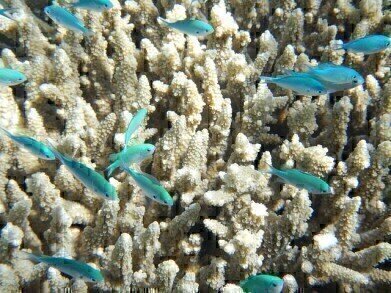Environmental Laboratory
How Can Manmade Clouds Help the Environment?
Jun 28 2017
Engineering artificial clouds to block out the sun may sound like the dastardly scheme of some nefarious arch-villain in a Pixar movie – but that’s exactly what a team of researchers in Australia are planning to do. With the Great Barrier Reef in the direst of straits, scientists from the Sydney Institute of Marine Science are hoping to ease some of the pressure on the precious coral reef by enhancing cloud coverage over its most damaged parts.
A critically endangered coral reef
Last year, the Great Barrier Reef endured the worst bleaching event in its history, with in excess of two-thirds of the gigantic reef lost to the phenomenon. Brought about an elevation in marine temperature, the bleaching had originally been blamed on El Niño but its continuation into 2017 points to global warming as the culprit.
Climate change has been affecting waters all over the planet. From the melting of polar icecaps to Arctic emissions of nitrous oxides (NOx), global warming spells all sorts of trouble for our delicate ecosystem.
The rise in water temperatures off the Australian coast means that the colourful algae which live off the reef are forced to move to cooler climes, resulting in a whitening effect. However, this is not just a cosmetic change; most of the reef’s energy is derived from these algae and in their absence, it can fall prey to harmful predators (such as seaweed and other parasitic organisms), eventually dying off altogether.
What is MCB?
Working in conjunction with the University of Sydney’s Ocean Technology Group, the researchers are attempting to use marine cloud brightening (MCB) to lend a helping hand to the world’s largest network of coral reefs.
This involves spraying tiny particles of salt into the Earth’s atmosphere, where they will instigate the formation of larger droplets of water and as a result, greater cloud coverage. Daniel Harrison, a postdoctoral research assistant working on the initiative, believes it is one of the few environmentally friendly options capable of helping a reef as big as the Great Barrier.
“One of the advantages of MCB is it replicates natural processes of sea spray generation which adds cloud condensation nuclei into the marine boundary layer,” he explained. “No chemicals are used, the droplets are very short-lived, perhaps around 24 hours, and we would only need to use the technology during periods when the corals were at high risk of bleaching.”
Not a long-term solution
While Harrison is adamant that the technique must be implemented as soon as possible to limit further bleaching where possible, he also stresses that it shouldn’t be viewed as a substitute for responsible environmental policy.
“I think the general public, and indeed many scientists, do not fully grasp the magnitude of the global warming problem. Sensitive ecosystems such as the Great Barrier Reef are beginning to collapse before our eyes,” he says. “If we can invent technology to explore beyond our solar system, walk on the moon - and perhaps Mars in the not-too-distant future - then surely we can save the Great Barrier Reef from death by overheating.”
With climate change such a hot topic right now, it’s perhaps the perfect time to consider our own carbon footprint and its impact upon our airwaves. Only through reducing emissions and improving air quality all over the globe can we ensure that we leave the planet in a healthy and robust condition for future generations.
Digital Edition
AET 28.3 September 2024
September 2024
Business News - ENVEA announces acquisition of APAQ Group - SICK and Endress+Hauser sign strategic partnership - Efforts to curb gas flaring intensify amid environmental concerns Air Monito...
View all digital editions
Events
Sep 21 2024 Tianjin, China
Meteorological Technology World Expo 2024
Sep 24 2024 Vienna, Austria
Water Africa and East Africa Building & Construction
Sep 24 2024 Kigali, Rwanda
Elmia Water and Wastewater Fair - POSTPONED
Sep 24 2024 Jonkoping, Sweden
Sep 25 2024 Vientiane, Laos




.jpg)














